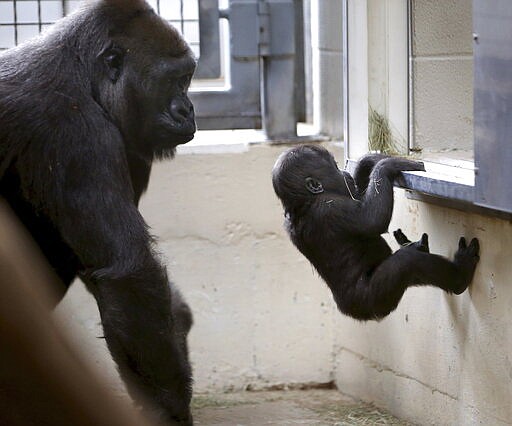DALLAS-They don't pull out the fuzzy socks and flannel robes, but when it's cold out, the Dallas Zoo has its own ways to keep animals cozy.
The Dallas Morning News reports the zoo never lets the animals get too hot or too cold, by keeping an eye on the forecast and considering other factors, including the temperature ranges of each species' natural habitats. Keepers also rely on care manuals that are shared in zoos across the country for guidelines about when animals should be inside.
But the suggestions can't always be applied species-wide. Some animals, like people, are picky and have their own ideas of what counts as too cold, and for the most part, the keepers accommodate them.
"Every species and every individual is a little different, so our team of zookeepers really understands the individual animals," said Matt James, the Dallas Zoo's senior director of animal care.
Hope, a Western lowland gorilla, is very specific about where she takes her 7-month old, Saambili. When the rest of the zoo's gorilla troop decides it wants to be outside, the protective mother may prefer to keep her young in the heated barn, James said.
"If Hope comes out and thinks it's too cold, warm, whatever it is that day, she'll turn around," he said.
The gorillas come from a humid and warm mountainous region in Africa where temperatures range from 65 to 80 degrees. The zoo follows guidelines that give the troop access to their indoor space when temperatures hit 45 degrees.
But when the sun is out and the temperature hits 50 without wind or rain, they get access back to the habitat, which has rocks that are heated internally using hot water, hay and windbreaks, James said.
The lions also have a heat rock that the male lion likes to be near.
All this heating and cooling can put the zoo's electricity bills through the wringer, though the zoo said it spends more on power in the summer than the winter.
Missy the chimpanzee can also be fussy.
"Missy is very particular about when she thinks it's acceptable to be inside and when she thinks it's acceptable to be outside," James said.
"The keepers are very in tune with the animals, and they take their cues from them. It's their option."
Reptiles are the most sensitive to weather changes because they are ectothermic and don't control their body temperatures, James said.
Though the snakes are indoors, the Nile crocodiles are outside on exhibit. They have the luxury of swimming in heated pools, where the water doesn't dip below 79 or 80 degrees.
Sometimes the zoo has to make the decision for the animals. Keepers make the call when they think it's too cold for 2-year-old Ajabu to be outside, even though the elephant weighs more than 2,000 pounds.
"At 45 with the sun out is when we say we're comfortable with AJ going outside and being in the cold weather, but he's more ready to go outside than we are," James said.
Severe weather can also dictate when animals have to go inside.
"If we knew we were going to be having a large ice storm coming through Dallas, we'd begin to be a little more strict with what we want the animals to do," James said.
Weather that is less than ideal also gives keepers a chance to spend time with the animals to practice husbandry behaviors, like volunteering a paw or ear to take a blood sample, James said.
The cold isn't the only thing the zoo needs to worry about in Texas. Extreme heat presents its own challenges.
African elephants are no strangers to triple-digit days and below-freezing nights, but when it's sweltering in Dallas, the zoo has hoses that spray water, pools and ice treats to cool down the animals. In the winter, they have access to piles of hay in their barns.
Whether it's in the upper 90s or the lower 40s, it's typically the animal that decides if it's time to come out of the elements, James said.
"The keepers are very in tune with the animals and they take their cues from them," he said. "It's their option."


